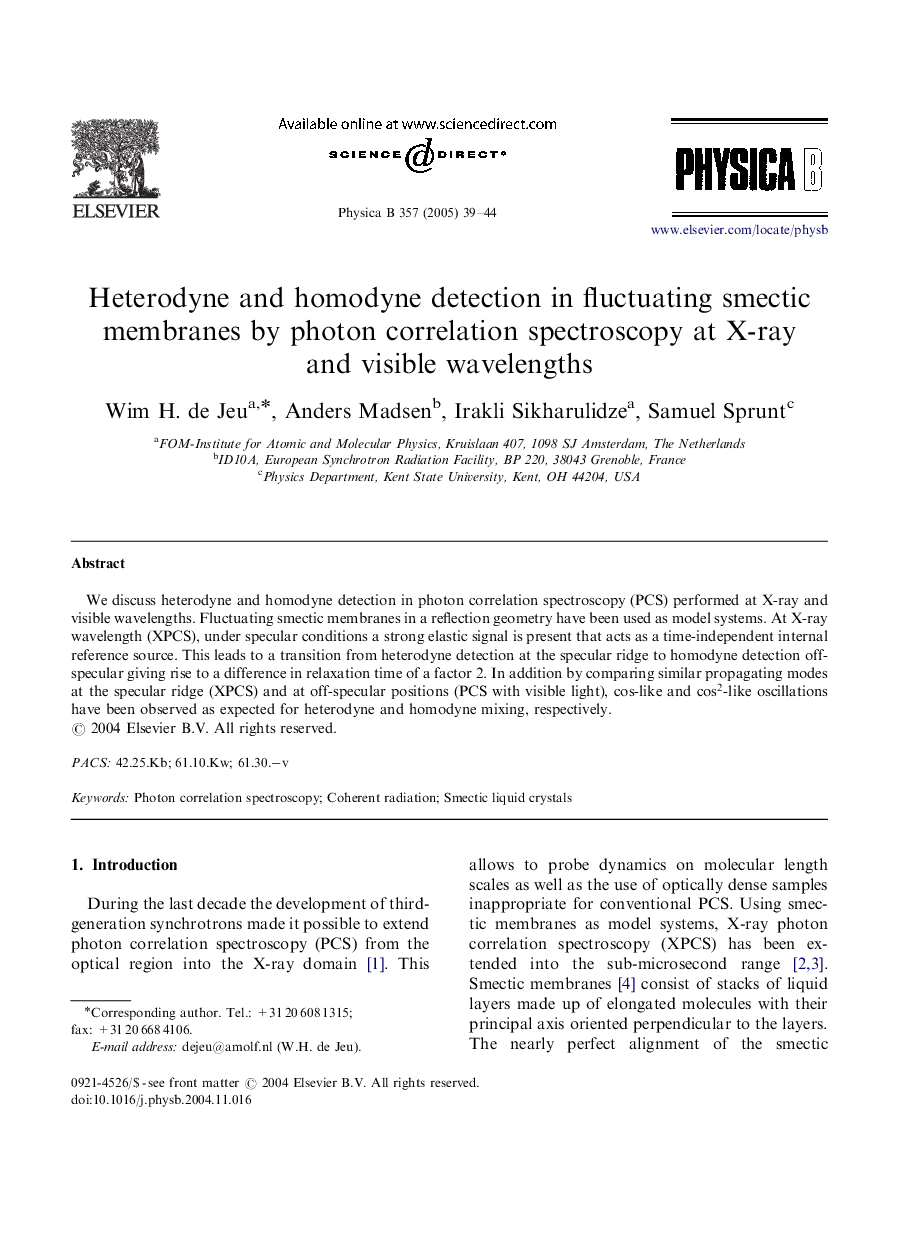| Article ID | Journal | Published Year | Pages | File Type |
|---|---|---|---|---|
| 9837855 | Physica B: Condensed Matter | 2005 | 6 Pages |
Abstract
We discuss heterodyne and homodyne detection in photon correlation spectroscopy (PCS) performed at X-ray and visible wavelengths. Fluctuating smectic membranes in a reflection geometry have been used as model systems. At X-ray wavelength (XPCS), under specular conditions a strong elastic signal is present that acts as a time-independent internal reference source. This leads to a transition from heterodyne detection at the specular ridge to homodyne detection off-specular giving rise to a difference in relaxation time of a factor 2. In addition by comparing similar propagating modes at the specular ridge (XPCS) and at off-specular positions (PCS with visible light), cos-like and cos2-like oscillations have been observed as expected for heterodyne and homodyne mixing, respectively.
Keywords
Related Topics
Physical Sciences and Engineering
Physics and Astronomy
Condensed Matter Physics
Authors
Wim H. de Jeu, Anders Madsen, Irakli Sikharulidze, Samuel Sprunt,
